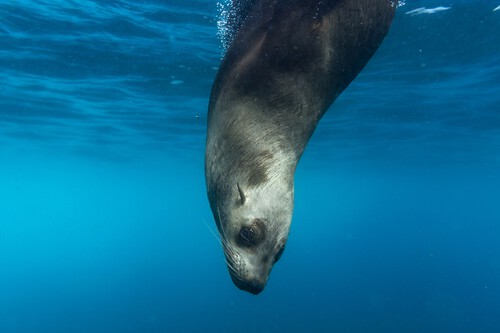Beaches in Southern California have recently become the focal point of a tragic sight. They’re the place where countless sea lions have become stranded, bobbing their heads or unable to get out of the surf.
Those are just some of the side effects of domoic acid toxicosis, a condition that can cause permanent brain damage in sea lions and lead to death.
Sea lion attacks in California. Interest in sea lions has risen in recent weeks after two people were attacked by the animals in March. In one case, a 15-year-old girl was completing a test to become a junior lifeguard when a sea lion suddenly attacked her right arm, covering her in bites, bruises, and scratches.
The other incident involved surfer and photographer RJ LaMendola, who said that a sea lion “erupted from the water, hurtling toward” him at top speed. The sea lion ended up biting LaMendola on his behind through his wetsuit and continued to follow him as he tried to get back to shore.
“I don’t know how to describe the fear that gripped me in that moment. So far from shore, so helpless, staring into the face of this creature that looked like nothing I’d ever seen—its expression was feral, almost demonic, devoid of the curiosity or playfulness I’d always associated with sea lions,” LaMendola wrote in a Facebook post.

Poisoned by the ocean. Of course, there was nothing demonic about the sea lion that attacked LaMendola, but it is true that the sea lions involved in these incidents weren’t behaving normally. Experts believe it's likely they were experiencing the side of effects of domoic acid toxicosis, a condition that affects the brain and can cause them to behave erratically.
Sea lions poisoned by domoic acid are also washing up on California beaches, where they experience seizures or appear to be bobbing their head. There is a specific type of seizure called “stargazing,” John Warner, CEO of the Marine Mammal Care Center in Los Angeles, told CNN. It involves sea lions extending their heads back for an unnaturally long period of time with their eyes closed.
“When they are affected with this toxin, they’re out of their minds,” Warner said, as reported by the outlet. “They’re scared. They’re totally disoriented and frightened. They really don’t understand where they are. They’re struggling to even get out of the water, so they don’t drown.”
When sea lions are in this state of mind, he continued, they often experience “hyper-energetic fight or flight kind of aggressive or scared behavior.” As such, if someone swims next to them and the animal doesn’t see them, it can lead to negative interactions.
The key: algae. The main cause behind the rise of domoic acid poisonings is a harmful algal bloom called Pseudo-nitzschia. This type of algae is a single-celled organism, part of a group called diatoms, that floats in the water and forms the base of the marine food chain. Diatoms are eaten by smaller creatures like plankton, which are then eaten by fish, and so on. Importantly, Pseudo-nitzschia can release the neurotoxin domoic acid.
As pointed out by National Geographic, Pseudo-nitzschia is always in the water. The problems begin during upwelling, a naturally-occurring event where cold, nutrient-rich water rises to the surface along the coast. Upwelling causes Pseudo-nitzschia to reproduce rapidly, which produces an algal bloom. In other words, these events lead to a surge of domoic acid in the food chain, eventually reaching animals like sea lions.
Sea lions aren’t the only ones affected by domoic acid toxicosis, though. Dolphins are also affected. According to the National Oceanic and Atmospheric Administration, the current outbreak of toxic algae has affected more than 100 dolphins so far.
Looking forward. While domoic acid toxicosis can mean death for some marine animals, there is hope available others. NOAA explains that there is little that can be done for dolphins, but sea lions can be taken to rehabilitation centers, where veterinarians flush the domoic acid from their systems.
“It does take an emotional toll in the field,” Warner said in a NOAA article. “Year after year, it’s getting tough. Each of our organizations is trying hard to get to as many animals as we can, but we don’t have the resources to rescue every one that is out there.”
Federal regulators stress that the public shouldn’t attempt to approach or help animals that appear to be suffering from domoic acid toxicosis, as they can be dangerous.
Images | Samuel Scrimshaw | Joss Woodhead
Related | The Color Blue Is Surprisingly Rare in Animals and Plants. There’s a Good Reason for It



Log in to leave a comment